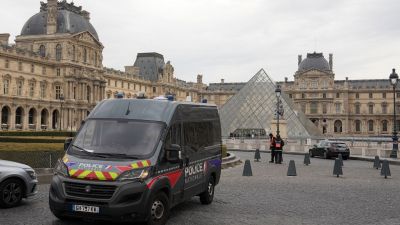Sunday Morning Blues
THREE mountain ranges tumble into the Mediterranean. Not much grows in their folds besides flowers, grapes, herbs and olives. In the peak of...

THREE mountain ranges tumble into the Mediterranean. Not much grows in their folds besides flowers, grapes, herbs and olives. In the peak of summer there are more cars than California on fewer roads than Bhutan. Tall houses in sun-baked hues are jostled together along the coastline, their canvas awnings reaching out to the water; the louvred shutters filtering out the sun, while allowing in the breeze. In 1887, poet Stephen Liegeard befittingly named it Cote d’Azur (the azure coast) and its popularity has never abated. It was a favourite winter haunt for Russian aristocrats on the run from tuberculosis, and for the English who escaped grey skies for unstinting sunshine, shedding both their overcoats and inhibitions. Over the years artists like Chagall and Matisse were attracted to the marvellous stimulus of light and colour, and moved here to paint.
Today, of course, Monty, with its beaches, film festivals and chic restaurants, is the world’s glamour central, with paparazzi ever on high alert and activities such as people-watching.
Bronzed bodies behind sunglasses rev up Ferrari engines on congested roads whilst bootylicious fashionistas are introduced around by their mamas, who, not content with their facelifts, are investigating injecting collagen into their vocal chords for a voice lift.
Sticking to the back lanes, I found it far more rewarding to explore the more discreet settings at Hyeres (known for its parks and nurseries of date palms), the magnificently situated Menton with its citrus orchards, and the bucolic Cap (cape) Ferrat.
I delighted in straying amidst olive orchards, stopping for oil tastings, or clambering up to St-Paul-de-Vence, a medieval pedestrian-only hill town just north of Cannes, where every other home is an art gallery.
Just a few miles west of St-Paul-de-Vence is Grasse, the spiritual heartland of aromatherapy and well known for its perfumeries. It was just as therapeutic to tread through the rows of live, undistilled lavender, to mill in a hillside of roses, to get tickled by a sensory overload of jasmine petals that get picked, like the tender shoots of our tea bushes, by the nimble fingers of women alone.
|
THE FULL MONTY
|
|
November The truffle market, Carpentras December Bain de Noel, Nice, Sunday after Christmas January Olive fest, Le Cannet February Carnival, Nice March Reconstruction of Napoleon’s landing, Golfe-Juan April Parade of vintage cars, Menton May Film festival, Cannes. Monaco Grand Prix June Festival of local artists, St-Paul-de-Vence July Battle of the flowers, fireworks, parties for Bastille Day, Nice August Jasmine fest, Grasse September Wine harvest festival, Le Cannet October Garden festival, Menton |
Every now and then I came across an elegant house discreetly sheltered in dense vegetation. Often it would be just a glimpse of a stone pediment embellishing a doorway or the start of a curving driveway lined with sculptural umbrella pines.
What lay behind? Was it a gracious mansion with grassy slopes sliding to the sea? A proxy house of a business tycoon from a faraway land? A lovingly groomed childhood home of a charming old lady who waits for market days to buy her fresh produce? My chance to explore a Riviera home came with a visit to the abode of Beatrice Ephrussi, a Rothschild daughter who was married to a Hungarian banker. It has been open to the public since 1934.
Stepping into the Villa and Gardens Ephrussi de Rothschild in Saint-Jean, Cap-Ferrat, one can visualise living in, what is known in these parts as a ‘belvedere’. It is a summer house commanding beautiful views. Ephrussi decided to give the main garden the shape of a ship’s deck, after a memorable journey on the ship, the Isle of France. She wanted to imagine herself standing at its helm when she was in her garden. A ‘temple of love’ cupola was built on its prow, and the sea surrounded it.
An entire ceiling was covered with a canvas painting of a chariot of love driven by doves. Quite a comprehensive collection, by a whimsical woman who could have whatever she wanted. Attached to her private bedroom was the even more private boudoir. The word ‘boudoir’, I learned, comes from the French verb boudet (to sulk). It brings to mind our very own sulk chamber, the kop bhavan—wasn’t that where Kaikeyi was found in a state of misery upon Dashrath’s proclaiming Ram the future king? Sulking, it seems, has been a privilege for the rich and spoilt in more cultures than one.





- 01
- 02
- 03
- 04
- 05


























